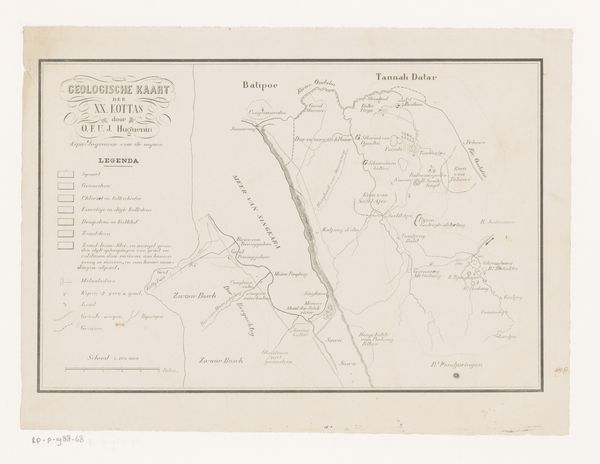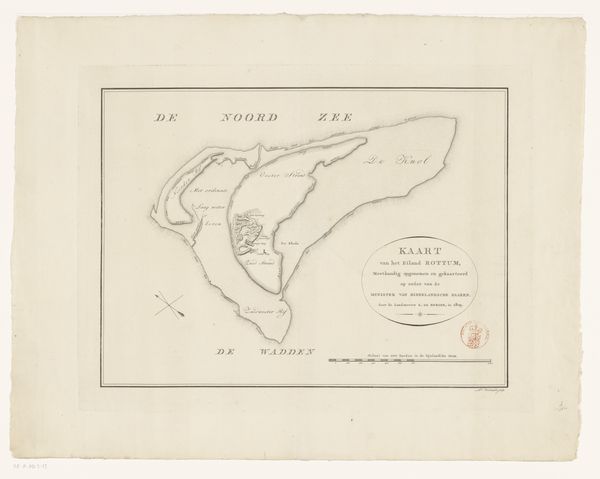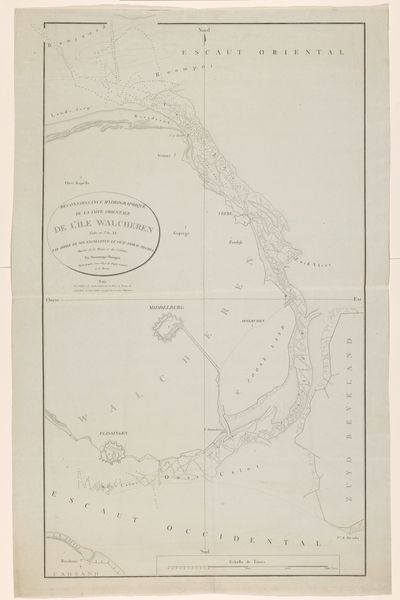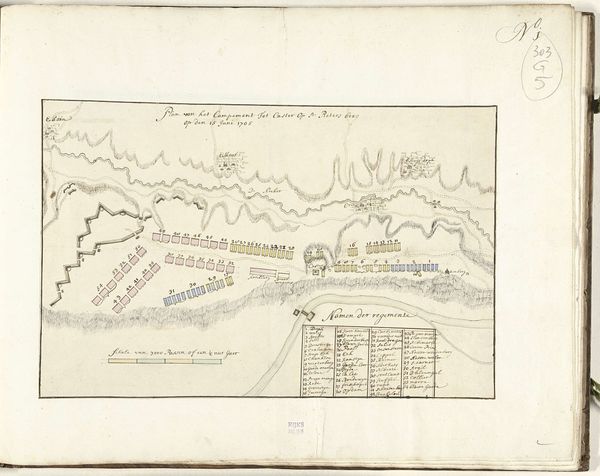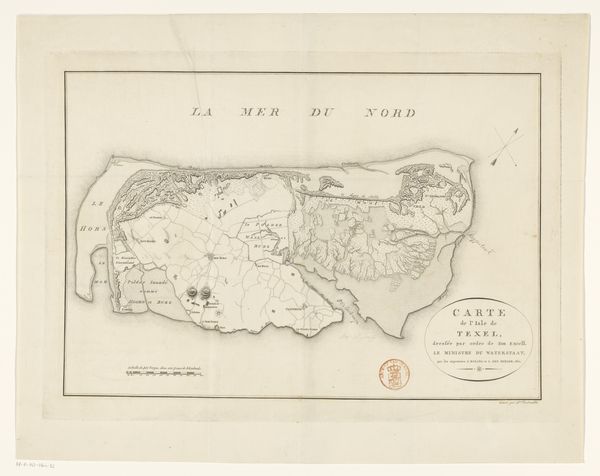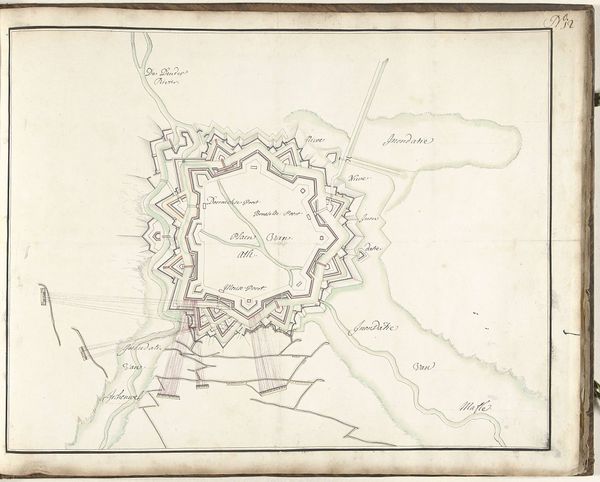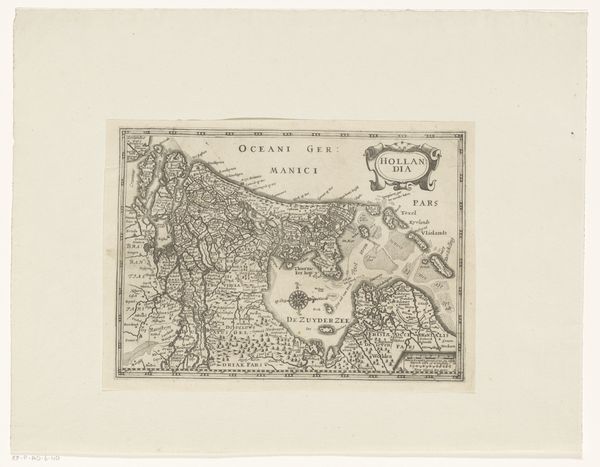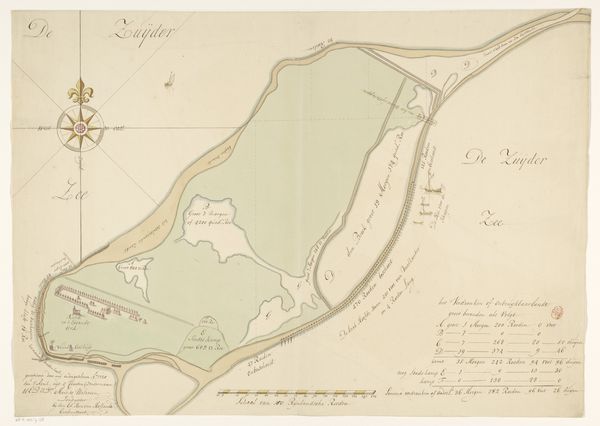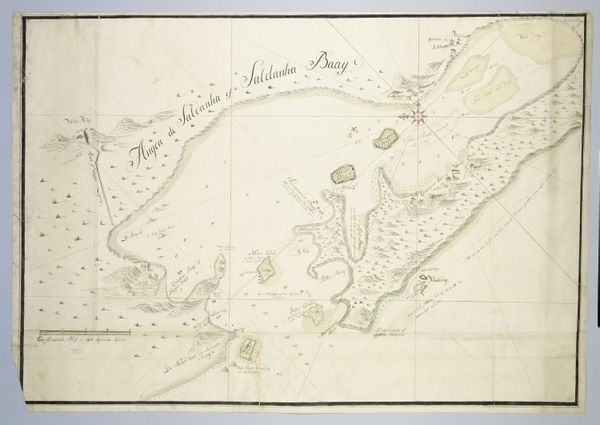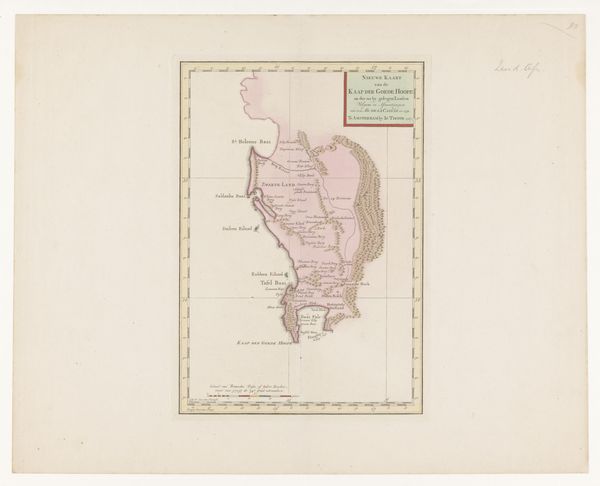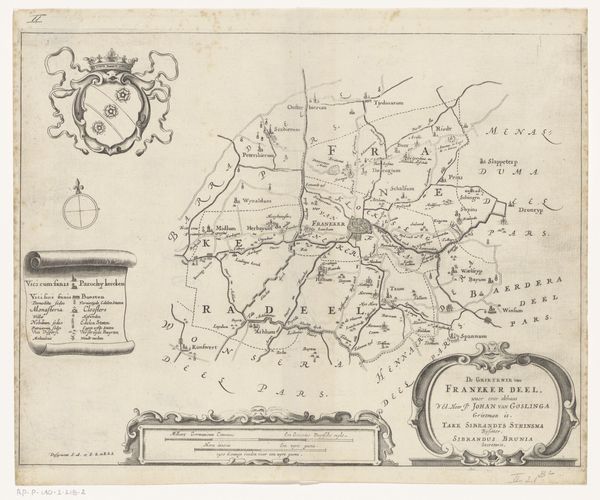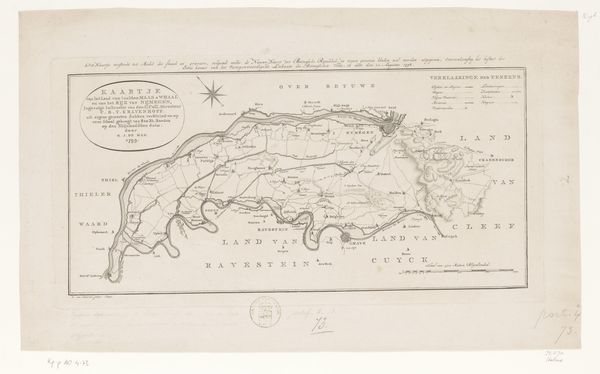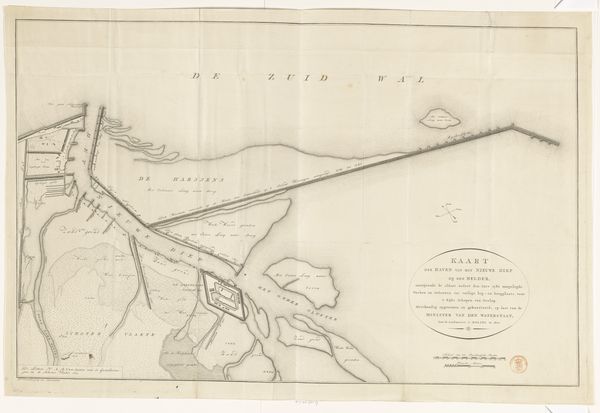
drawing, paper, ink
#
drawing
#
neoclacissism
#
landscape
#
paper
#
ink
#
history-painting
Dimensions: height 339 mm, width 440 mm
Copyright: Rijks Museum: Open Domain
Curator: Let’s turn our attention to "Kaart van Schiermonnikoog," a drawing in ink on paper by Daniël (I) Veelwaard, created in 1809. Editor: It’s quite understated, almost ghostly. The thin lines and muted tones create a sense of distance, like looking at a faded memory of land. Curator: Precisely. As a materialist, I find it intriguing how this map reflects not only geographic space but also the technologies and resources available at the time for its creation. The precise linework, possible with readily available ink and paper, speaks to a need for control and measurement. It wasn’t just about depicting the land, but owning its representation. Editor: And who had access to these maps and their information? Considering its date, 1809, we must examine it within the context of Dutch governance and resource management during that era. Maps like this often served specific administrative and economic interests, detailing land for potential exploitation, ownership disputes, or fortification strategies. Who lived on this island and how did its mapping impact the community's relation with the mainland, state powers, trade and identity? Curator: I agree. The level of detail, or lack thereof, shows the specific intention behind its making. Who commissioned it? What resources or control over populations living on this insular piece of land did that give them? This artwork functions as a tool in an economic-political apparatus of the time. Editor: This drawing, though seemingly neutral, represents an active process of power relations. "Schiermonnikoog" wasn’t just passively rendered, it was being defined and placed in relationship to mainland political discourse by those wielding instruments such as Veelwaard's drawing. In looking at the map now, it is impossible to remove these implications of hierarchy and control. Curator: Certainly. It encourages thinking about how resources shaped access and therefore who could make such a visual depiction. This simple-seeming artwork becomes part of a vast narrative about materials, resources, labour and historical power. Editor: A story of how art, as well as culture, has historically helped reinforce the voices and worldviews of a few, while marginalizing others. It really makes me reconsider our own relationship to power, and whether as viewers of art, we might also perpetuate patterns of the past.
Comments
No comments
Be the first to comment and join the conversation on the ultimate creative platform.
